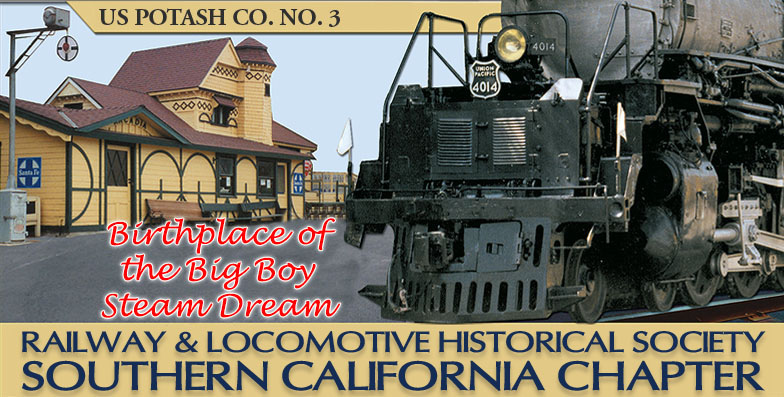United States Potash Co. No. 3
A Brief History Of This Engine
Locomotive number 3 is an excellent example of the turn-of-the-century narrow gauge locomotives that were used on the many short lines of the West. Number 3 was originally built for the 36 inch gauge Morenci Southern Railroad, an 18.4 mile line in Southern Arizona. When the line was abandoned in the 1930’s, number 3 was bought by United States Potash for use on their private, ore hauling railroad at Carlsbad, New Mexico. It was used in daily service until 1946 and was donated to the Chapter in 1956 by the United States Borax and Chemical Corporation (formerly United States Potash). Number 3 has its tiny drive wheels located inside the frame of the locomotive, while the counterbalances and rods are located outside.
The Era Of The Diesel Electric Locomotive

Since narrow gauge railways are usually built with smaller radius curves and smaller structure gauges, they can be substantially cheaper to build, equip, and operate than standard gauge or broad gauge railways, particularly in mountainous terrain. The lower costs of narrow gauge railways mean they are often built to serve industries and communities where the traffic potential would not justify the costs of building a standard or broad gauge line. Narrow gauge railways also have specialized use in mines and other environments where a very small structure gauge makes a very small loading gauge necessary. On the other hand, standard gauge or broad gauge railways generally have a greater haulage capacity and allow greater speeds than narrow gauge systems.
Historically, many narrow gauge railways were built as part of specific industrial enterprises and were primarily industrial railways rather than general carriers. Some common uses for these industrial narrow gauge railways were mining, logging, construction, tunnelling, quarrying, and the conveying of agricultural products. Extensive narrow gauge networks were constructed in many parts of the world for these purposes. Significant sugarcane railways still operate in Cuba, Fiji, Java, the Philippines and in Queensland in Australia. Narrow gauge railway equipment remains in common use for the construction of tunnels.
The other significant reason for narrow gauge railways to be constructed was to take advantage of reduced construction costs in mountainous or difficult terrain, hence the national railway systems of countries such as Indonesia, Japan and New Zealand are primarily or solely narrow gauge. Trench railways of the World War I western front demonstrate a brief military application of this advantage.




